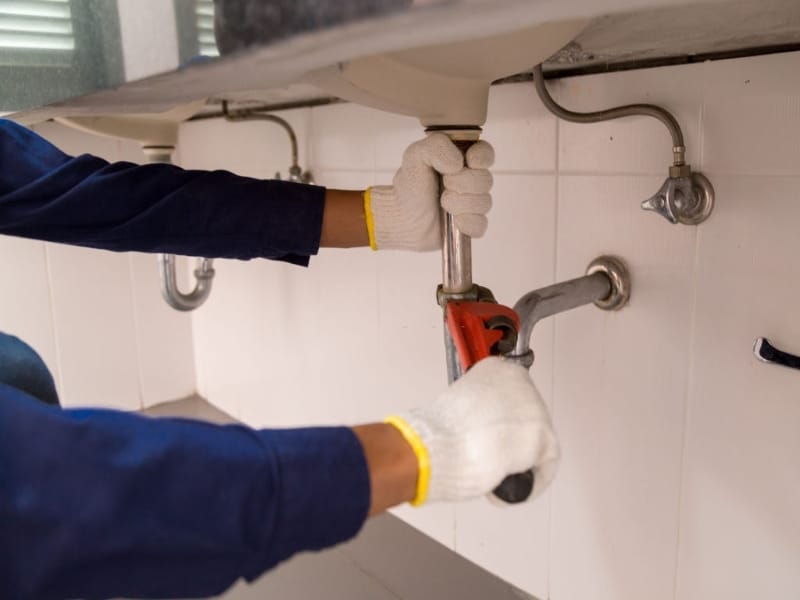Are you in Blacktown, Sydney or surrounding areas? Here’s what you need to know about your bathroom and toilet plumbing.
Bathroom and toilet plumbing are something we often forget about as property owners – that is until something goes wrong with the plumbing. Emergency Plumbers in Blacktown offers the following information to help property owners understand how bathroom and toilet plumbing work, so you can troubleshoot possible problems. By staying proactive and investing in regular maintenance, homeowners can ensure their toilet plumbing system operates smoothly and reliably.

How Your Toilet Plumbing Works
You flush the toilet many times a day, but most of us don’t think about the plumbing operation of the toilet. The toilet consists of only a few standard components that keep it working properly. Understanding the basics of toilet plumbing can help homeowners troubleshoot common issues like clogs and leaks. The plumbing of a toilet is a four-step process.
At the top, outside the toilet tank, there is a flush handle that is connected to a chain inside the toilet’s tank. The chain is then connected to a flapper that is located at the bottom of the inside of the tank. When a user pushes the handle down, the chain inside the toilet’s tank pulls the flapper up. With the flapper up, water is released from the tank and into the toilet bowl.
The next step in the process is the toilet tank emptying its water into the toilet bowl. The water itself performs a dual function here. The first function of the water is to push the dirty water and waste from the bowl of the toilet and into the pipe that leads to the septic tank or sewer.
The second function of the water is to refill the toilet bowl with clean water. Once the waste and dirty water have been pushed into the pipe and the bowl filled with fresh, clean water, the flapper will seal the passage restricting water flow into the bowl and the tank will begin to fill with water, ready for the next flush.
Depending on how old the plumbing of the toilet is, the last two steps can be carried out in different manners. The third step in the process is for water to refill the tank, and the fourth step is stopping the water once the tank is refilled. When the toilet is flushed, the tank is empty, and new clean water flows into the tank.
With conventional toilets, a float is used inside the tank to automate the process. When the tank is empty, the float sinks to the bottom of the tank and rests. When the float changes position, a valve is then opened (ball cock), allowing fresh water to fill the tank. When the tank fills with water, the float rises to its original position and the ball cock closes, stopping the water flow into the tank, making the toilet ready for another flush. Proper toilet plumbing maintenance is essential for preventing costly repairs and maintaining a hygienic bathroom environment.
The construction of newer toilets is somewhat different as they are not built with afloat. Instead, the ball cock is water pressure sensitive. It opens to allow fresh water into the tank after a flush. There is no water pressure when the tank is empty. When the water level hits a specific point in the tank, the ball cock then closes.
Shower Plumbing
Shower plumbing, for the most part, is hidden in the walls and underground and difficult for an amateur professional to work on. With shower problems, we suggest that you seek the assistance of a professional. However, there are things homeowners can do to help ensure the shower operates at its full potential.
One of the most common problems when it comes to shower plumbing is hair clogs. Here, homeowners can benefit from a chemical drain cleaner that should be included as monthly maintenance for showers.
Once a month, pour the drain cleaner down the drain of the shower to help stop and eliminate hair and other debris that clog the drain. Homeowners are advised to remove the strainer that covers the shower drain and clean the drain once a month.
If your shower is already clogged, plunging the shower drain can be a solution. If the plunging fails to release the clog, then the property owner might use a snake or auger to unclog the drain.
Here, a chemical drain cleaner can also be used. If you do use drain cleaner in the drain, do not plunge the drain afterwards.
If you are experiencing low flow from your showerhead, it may be caused by a blockage in the showerhead. A quick solution is to replace the showerhead (they are fairly inexpensive).
When removing the showerhead, check to see if there is debris inside the showerhead. It is not uncommon for debris to be lodged in the head and getting rid of it might help solve the issue.
For more information on plumbing or to obtain the services of a 24 Afterhours plumber, contact us at the number below or through our site. We are the affordable choice in a plumber and you don’t have to wait around for us to arrive. Our licensed plumber can provide expert toilet plumbing services, including repairs, installations, and upgrades.
If you need safe, fast, trusted and insured plumbers give us a call on ?9622 4888







Comments are closed